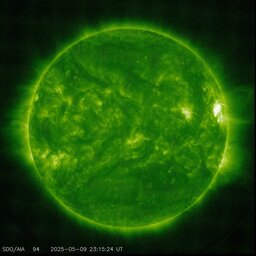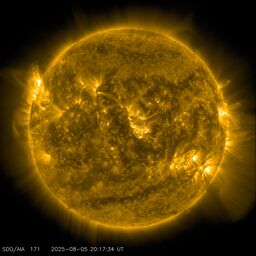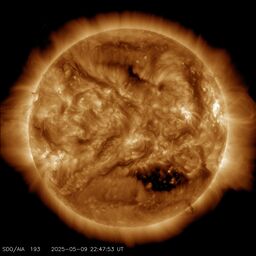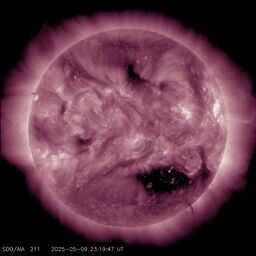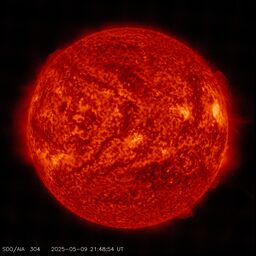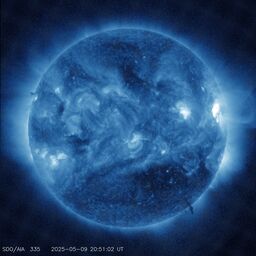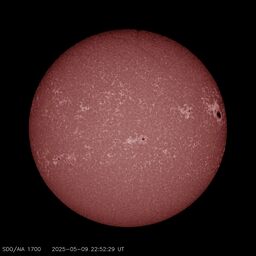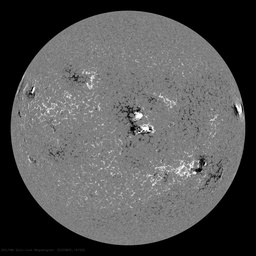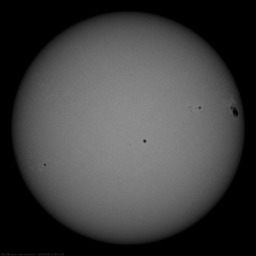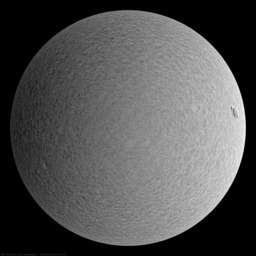Latest images from the Solar Dynamics Observatory (SDO – AIA/EVE/HMI)
SDO (Solar Dynamics Observatory) is a sun-pointing semi-autonomous spacecraft that allows nearly continuous observations of the Sun with a continuous science data downlink rate of 130 Mbps. The spacecraft is 4.5 meters high and over 2 meters on each side, weighing a total of 3100 kg (fuel included). SDO’s inclined geosynchronous orbit was chosen to allow continuous observations of the Sun and enable its exceptionally high data rate through the use of a single dedicated ground station.
You can check the spacecraft’s current position and status here and the last 48 hours here.
AIA images
The AIA (Atmospheric Imaging Assembly) images the solar atmosphere in multiple wavelengths to link changes in the surface to interior changes. Data includes images of the Sun in 10 wavelengths every 10 seconds.
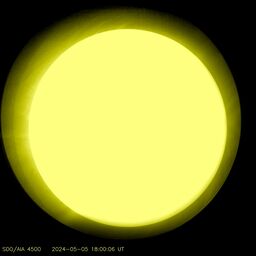 Note: The color tables used to display the 171A, 193A, 211A and 304A “ALT” AIA images here are the ones used to display similar bandpasses for SOHO EIT and STEREO EUVI images.
Note: The color tables used to display the 171A, 193A, 211A and 304A “ALT” AIA images here are the ones used to display similar bandpasses for SOHO EIT and STEREO EUVI images.
—
HMI images
The Helioseismic and Magnetic Imager (or HMI) studies the oscillations and the magnetic field at the solar surface. It observes the full solar disk at 6173 A with a resolution of 1 arcsecond. HMI is a successor to the Michelson Doppler Imager on the Solar and Heliospheric Observatory (SOHO).
The Michelson Doppler Imager or (MDI) images are taken in the continuum near the Ni I 6768 Angstrom line. The most prominent features in them are the sunspots. This is very much how the Sun looks like in the visible range of the spectrum.
HMI Magnetogram [VIDEO]
HMI Intesitygram [VIDEO]
HMI Dopplegram
—
Current sunspots
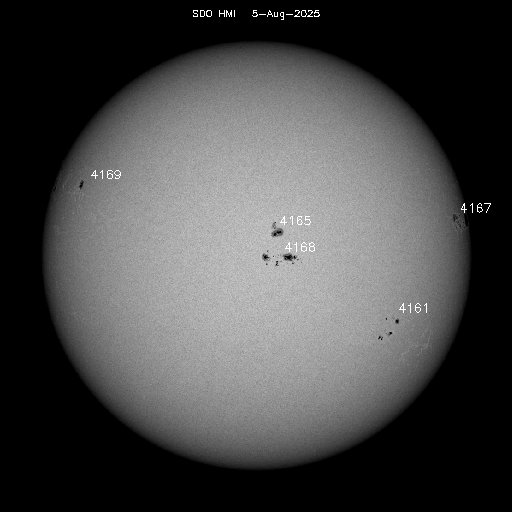
Courtesy of NASA/GSFC/JSOC/LASP/SDAC/SIDC/LMSAL (SDO).

